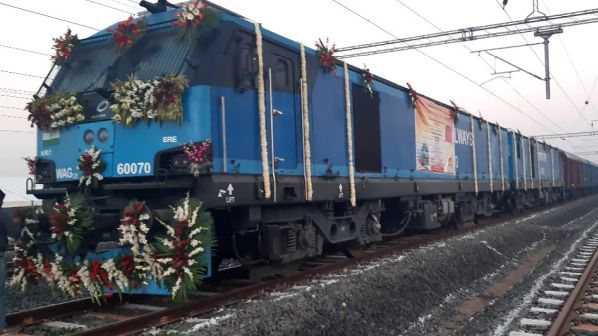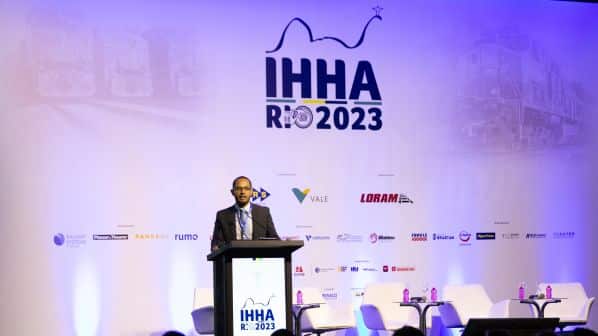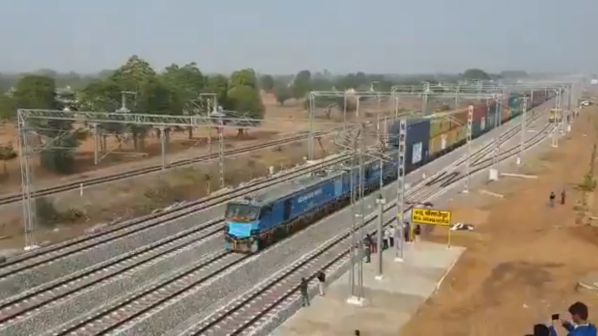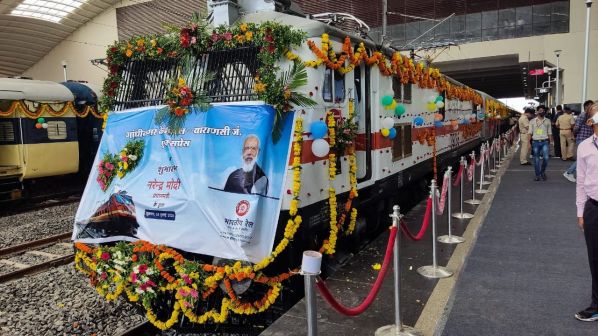COMMERCIAL operation began on India’s 1337km Eastern Dedicated Freight Corridor (EDFC) on November 1. However, Indian Railways (IR) is reportedly abandoning plans to build future freight corridors due to the low return on investment.
After a decade and a half of construction, the completion of the entire EDFC connecting Ludhiana in Punjab to Sonnagar in Bihar was announced earlier this month by Dedicated Freight Corridor (DFC) managing director, Mr R K Jain. The estimated cost of the World Bank-funded EDFC is Rs 550bn ($US 6.6bn).
The first section of the EDFC was inaugurated in December 2020, with 140 trains operating on small sections until completion of the entire route. The EDFC has capacity for up to 250 trains a day, and will largely cater for coal traffic, serving the thermal power plants in the states of Uttar Pradesh, Punjab, Haryana and parts of Rajasthan. The line will reduce the journey time for freight services between Ludhiana and Sonnagar from 35-50 hours on the mainline network to 18-20 hours on the EDFC.
“The corridor will be a vital cog in the Indian government’s plans to avert a possible coal crisis in future through the optimisation of the transport network,” ministry officials said.
The EDFC is initially expected to carry 153 million tonnes of freight, increasing to 251 million tonnes by 2036-37, while tonnage on the Western Dedicated Freight Corridor (WDFC) is expected to increase from 161 million tonnes in 2021-22 to 284 million tonnes in 2036-37.
The 1506km WDFC, funded by the Japan International Cooperation Agency (Jica) and connecting Dadri in Uttar Pradesh to Jawaharlal Nehru Port in Navi Mumbai, is still under construction and due to be completed early next year. On October 30, Indian prime minister, Mr Narendra Modi, inaugurated the 77km New Bhandu - New Sanad section in Gujarat.
The EDFC was approved about 15 years ago, but faced several hurdles related to land acquisitions, delays in award of contracts and in appointing consultants, loan approvals and the outbreak of Covid-19. The two corridors have missed several completion deadlines, leading to an estimated 54% escalation in costs. In March last year, railways minister, Mr Adhwani Vaishnaw, announced plans to construct three new freight corridors including the East Coast Corridor, East-West sub corridor and the North South Corridor. However, IR managers appear to be rethinking these plans, with IR considering alternatives such as adding additional tracks to existing lines, which is likely to be a more cost-effective option that can also be built at a faster pace, ministry sources said.
Meanwhile, there has been little development of plans to extend the EDFC from Sonnagar to Dankuni in West Bengal. The extension was due to be constructed under a Public Private Partnership (PPP) model but failed to elicit a response from investors. In July, the union cabinet revised the project implementation model by deciding to adopt the Engineering, Procurement and Construction (EPC) model, while also deciding that the extension would now be built from Sonnagar in Bihar to Andal in West Bengal, means the 250km extension section will now be fully funded by IR.
For detailed data on freight rail projects around the world, subscribe to IRJ Pro.




